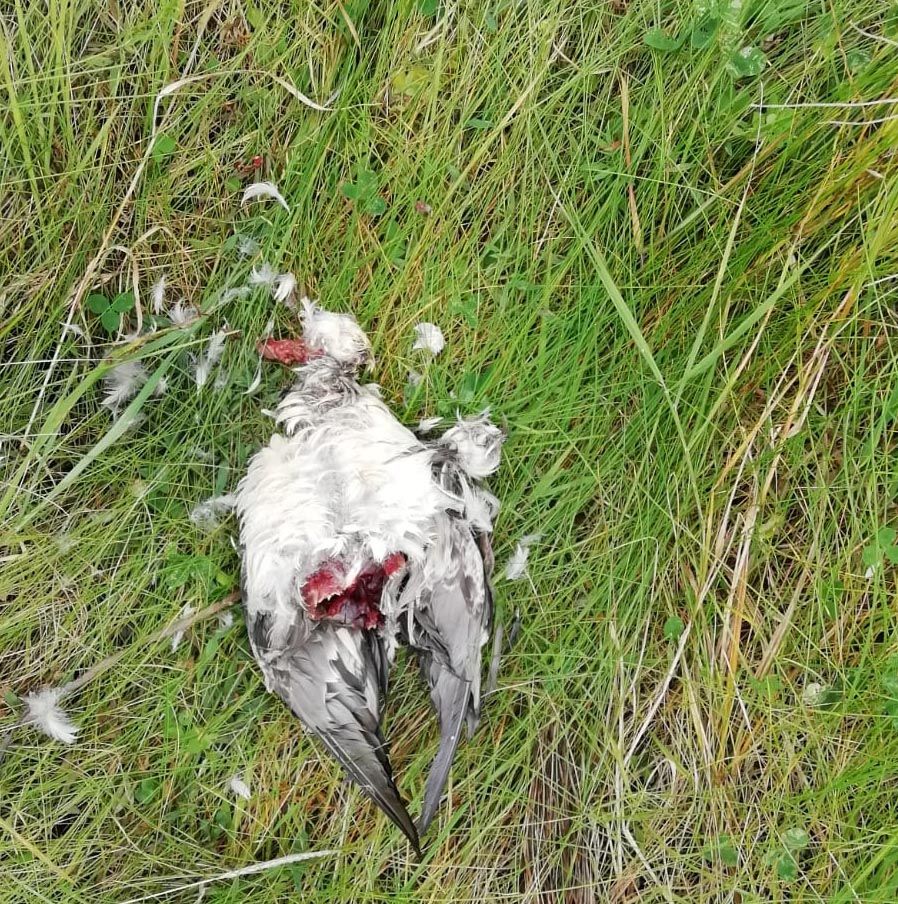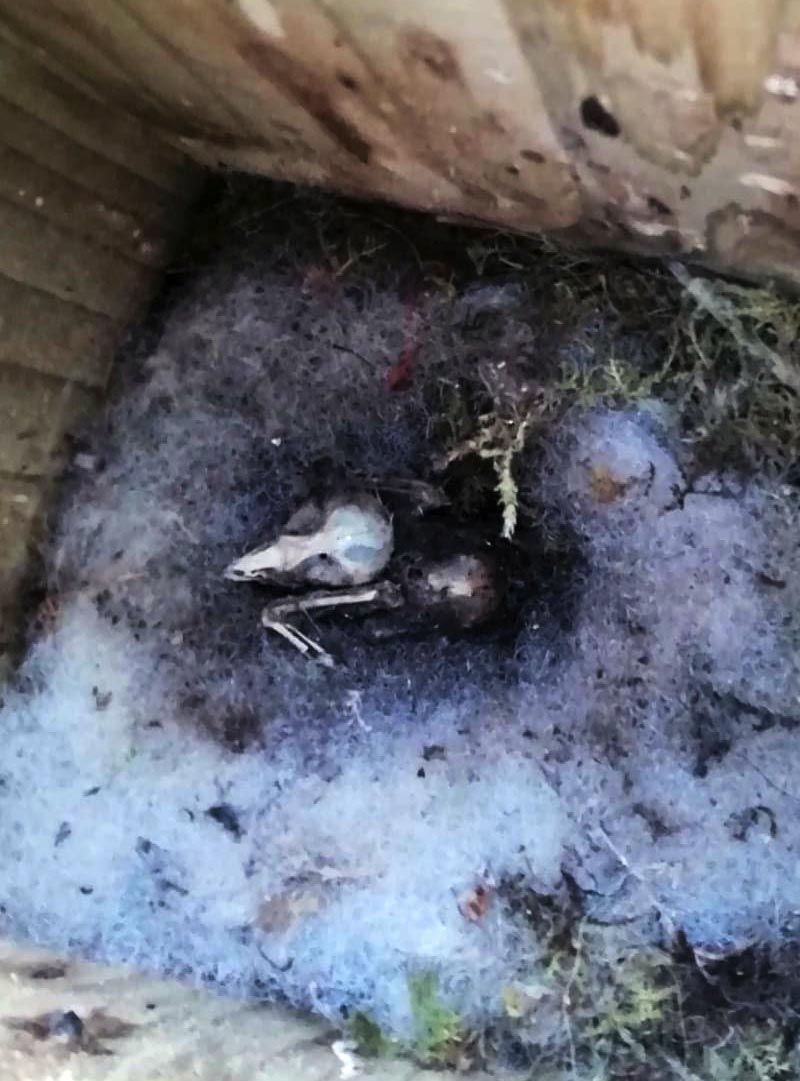Dúlra got the fright of his life this week when he opened the garden nestbox for its autumn clean. Because inside lay an unhatched egg and the skeleton of a poor wee chick...
Dúlra had thought the blue tits that nested there were so happy. From early spring they darted back and forth, first with nest material, then with food when the chicks hatched. Today the garden is full of blue tits – and Dúlra likes to tell himself that it was all his doing for supplying the box.
But we never know what’s going on in a bird’s head – they don’t show emotions like sadness. They simply do things – fly, eat, sing, fight.
And so we see what we want to see – in Dúlra’s case he saw a pair of blue tits happily raising the next generation.
They successfully reared some chicks – but it can’t have been easy sharing the same box as an unhatched egg, and the parents must have been forced to leave one chick behind. By the size of the skeleton it was fully grown – maybe it starved to death or simply couldn’t make the jump up to the hole and freedom.
This week the tragic contents of the box were emptied out and it was screwed back onto the wall in the hope that, come spring, the blue tits will return. Or will they remember the tragedies that befell them in it and stay away?
Another Halloween horror was found down by the docks this week. Dúlra almost stepped on this large bird which had been brutally slain by a mystery foe.

The bloodied carcass was one Dúlra had never seen before – and it took another expert to identify it as a manx shearwater – one of our most incredible seabirds.
Manx shearwaters – which got their English name because they used to breed on the Isle of Man – have a history of meeting grisly deaths, thanks to us. For centuries people used to take their single chick from its nest down a hole dug into the ground, which was considered a delicacy when cured – even today up to 5,000 of these nestlings are still harvested to be eaten in the Faroe Islands.
Pretty impressed by the number of GIFs available on Twitter. Most all birds have one.
— The Birdist (@TheBirdist) October 10, 2019
Here’s “Shearwater” pic.twitter.com/MueIMq0Q6Z
Each chick is particularly precious for shearwaters, because they might be the longest living bird species in the world. A decade ago experts were stunned to catch a bird on our own Copeland Island that had been ringed 50 years previously – it was at least 55 years old.
Hopefully, the bird at Dúlra’s foot wasn’t that record-holder – although it must be said that the old codger wouldn’t be too swift at avoiding a predator, in this case probably a peregrine falcon.
The world’s fastest bird kills the world’s oldest bird – would make a good headline in the Bird Times!
Their long life isn’t the only remarkable thing about Manx shearwaters – cánóg dhubh in Irish – because they may well be the fittest of all our birds as well, migrating to Argentina every July.
That pensioner bird on Copeland could have flown five million miles in its life – the equivalent to the moon and back 20 times!
Shearwaters nesting on uninhabited islands off our west coast will think nothing of flying to the Mid-Atlantic Ridge 1,000 miles away to get food for their chick. It’s not quite popping down to the local Spar for groceries.
They actually smell food – small fish that feed on plankton – from many miles away and follow their scent.
Unfortunately the shearwater at Belfast docks didn’t sniff danger when the peregrine falcon came calling.
Happy Halloween!
* If you’ve seen or photographed anything interesting, or have any nature questions, you can text Dúlra on 07801 414804.







